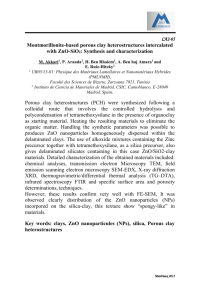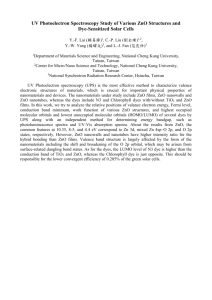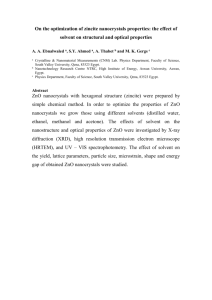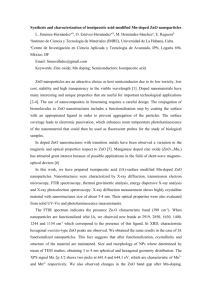Ultraviolet Detectors Based on ZnO:N Thin Films with Different
advertisement
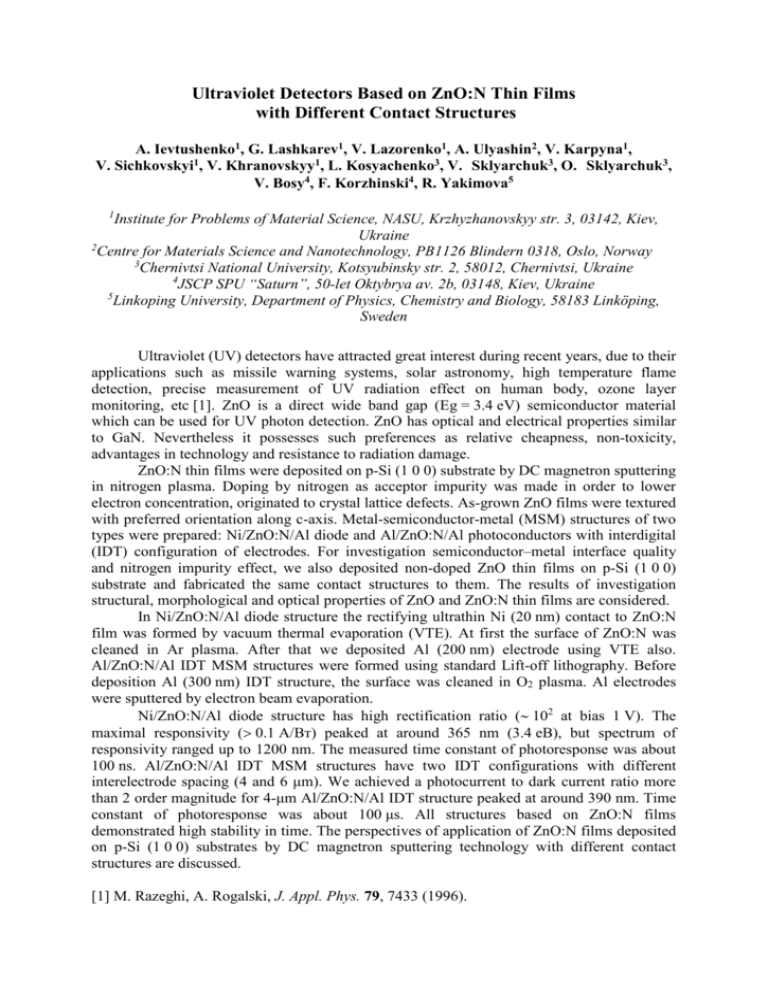
Ultraviolet Detectors Based on ZnO:N Thin Films with Different Contact Structures A. Ievtushenko1, G. Lashkarev1, V. Lazorenko1, A. Ulyashin2, V. Karpyna1, V. Sichkovskyi1, V. Khranovskyy1, L. Kosyachenko3, V. Sklyarchuk3, O. Sklyarchuk3, V. Bosy4, F. Korzhinski4, R. Yakimova5 1 Institute for Problems of Material Science, NASU, Krzhyzhanovskyy str. 3, 03142, Kiev, Ukraine 2 Centre for Materials Science and Nanotechnology, PB1126 Blindern 0318, Oslo, Norway 3 Chernivtsi National University, Kotsyubinsky str. 2, 58012, Chernivtsi, Ukraine 4 JSCP SPU “Saturn”, 50-let Oktybrya av. 2b, 03148, Kiev, Ukraine 5 Linkoping University, Department of Physics, Chemistry and Biology, 58183 Linköping, Sweden Ultraviolet (UV) detectors have attracted great interest during recent years, due to their applications such as missile warning systems, solar astronomy, high temperature flame detection, precise measurement of UV radiation effect on human body, ozone layer monitoring, etc [1]. ZnO is a direct wide band gap (Eg = 3.4 eV) semiconductor material which can be used for UV photon detection. ZnO has optical and electrical properties similar to GaN. Nevertheless it possesses such preferences as relative cheapness, non-toxicity, advantages in technology and resistance to radiation damage. ZnO:N thin films were deposited on p-Si (1 0 0) substrate by DC magnetron sputtering in nitrogen plasma. Doping by nitrogen as acceptor impurity was made in order to lower electron concentration, originated to crystal lattice defects. As-grown ZnO films were textured with preferred orientation along c-axis. Metal-semiconductor-metal (MSM) structures of two types were prepared: Ni/ZnO:N/Al diode and Al/ZnO:N/Al photoconductors with interdigital (IDT) configuration of electrodes. For investigation semiconductor–metal interface quality and nitrogen impurity effect, we also deposited non-doped ZnO thin films on p-Si (1 0 0) substrate and fabricated the same contact structures to them. The results of investigation structural, morphological and optical properties of ZnO and ZnO:N thin films are considered. In Ni/ZnO:N/Al diode structure the rectifying ultrathin Ni (20 nm) contact to ZnO:N film was formed by vacuum thermal evaporation (VTE). At first the surface of ZnO:N was cleaned in Ar plasma. After that we deposited Al (200 nm) electrode using VTE also. Al/ZnO:N/Al IDT MSM structures were formed using standard Lift-off lithography. Before deposition Al (300 nm) IDT structure, the surface was cleaned in O2 plasma. Al electrodes were sputtered by electron beam evaporation. Ni/ZnO:N/Al diode structure has high rectification ratio ( 102 at bias 1 V). The maximal responsivity ( 0.1 А/Вт) peaked at around 365 nm (3.4 еВ), but spectrum of responsivity ranged up to 1200 nm. The measured time constant of photoresponse was about 100 ns. Al/ZnO:N/Al IDT MSM structures have two IDT configurations with different interelectrode spacing (4 and 6 μm). We achieved a photocurrent to dark current ratio more than 2 order magnitude for 4-μm Al/ZnO:N/Al IDT structure peaked at around 390 nm. Time constant of photoresponse was about 100 μs. All structures based on ZnO:N films demonstrated high stability in time. The perspectives of application of ZnO:N films deposited on p-Si (1 0 0) substrates by DC magnetron sputtering technology with different contact structures are discussed. [1] M. Razeghi, A. Rogalski, J. Appl. Phys. 79, 7433 (1996).


